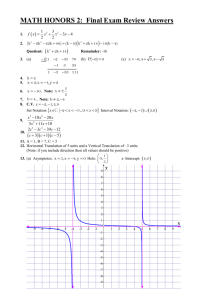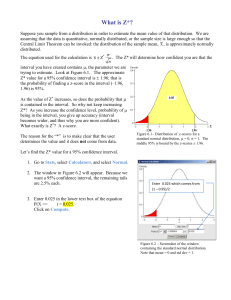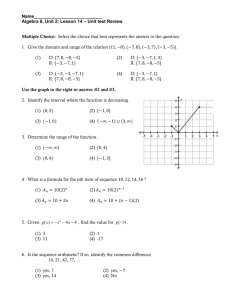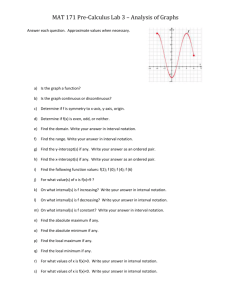Interval Notation Notes
advertisement
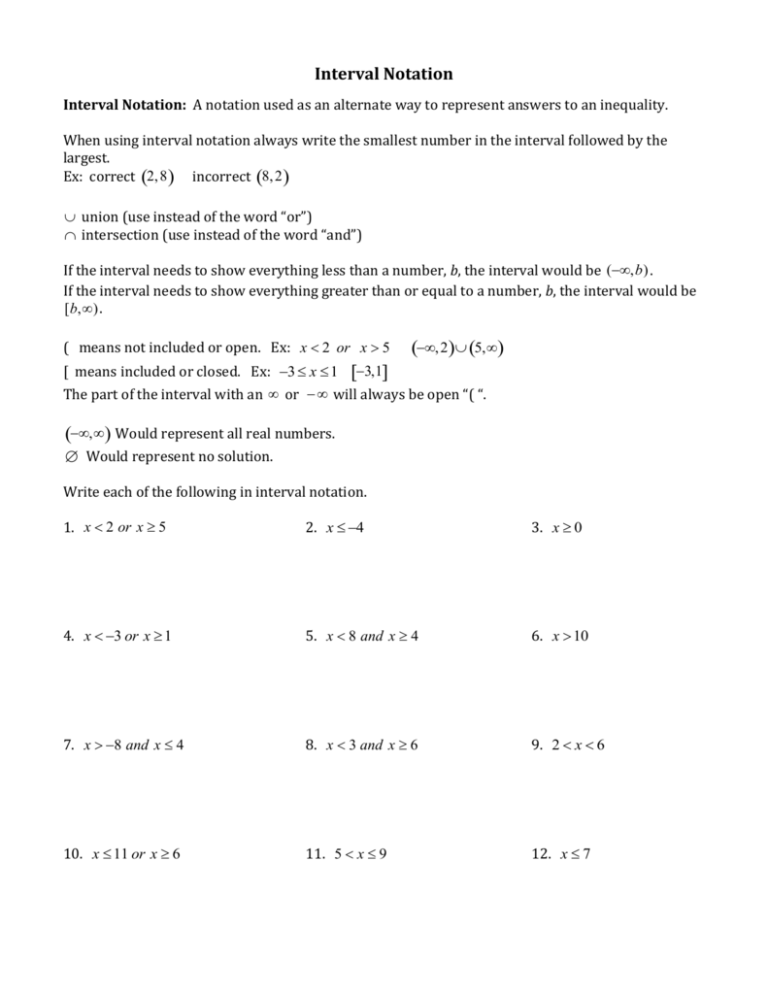
Interval Notation Interval Notation: A notation used as an alternate way to represent answers to an inequality. When using interval notation always write the smallest number in the interval followed by the largest. Ex: correct 2, 8 incorrect 8, 2 union (use instead of the word “or”) intersection (use instead of the word “and”) If the interval needs to show everything less than a number, b, the interval would be (,b) . If the interval needs to show everything greater than or equal to a number, b, the interval would be [b,) . ( means not included or open. Ex: x 2 or x 5 [ means included or closed. Ex: 3 x 1 , 2 5, 3,1 The part of the interval with an or will always be open “( “. , Would represent all real numbers. Would represent no solution. Write each of the following in interval notation. 1. x 2 or x 5 2. x 4 3. x 0 4. x 3 or x 1 5. x 8 and x 4 6. x 10 7. x 8 and x 4 8. x 3 and x 6 9. 2 x 6 10. x 11 or x 6 11. 5 x 9 12. x 7 Write the solution in interval notation.


